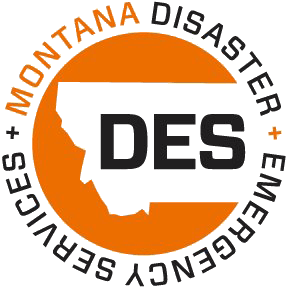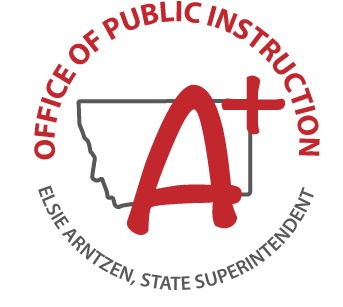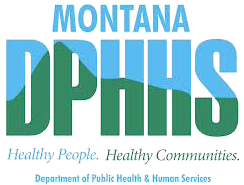- ▾ Other ShakeOuts ▾
- Alaska
- American Samoa
- Arizona
- British Columbia
- California
- Central U.S. (AL AR IA IL IN KS KY LA MO MS NE OH OK TN)
- CNMI
- Colorado
- Guam
- Hawaii
- Idaho
- Japan
- Montana
- Nevada
- New Mexico
- New Zealand
- NorthEast U.S. (CT MA ME NH NJ NY PA RI VT)
- Oregon
- Puerto Rico
- Quebec & Eastern Ontario
- SouthEast U.S. (DC DE FL GA MD NC SC VA WV)
- Texas
- Upper MidWest U.S. (MI MN ND SD WI)
- U.S. Virgin Islands
- Utah
- Washington State
- Wyoming
- Yukon
- Other Countries

Why Should You Participate?
Each time an earthquake occurs in Montana, the news media and public asks, “Does Montana have earthquakes?” Short answer: Yes!
In comparison with California, Nevada, and Utah, major earthquakes here are infrequent. But each year, hundreds of earthquakes do occur in and around Montana. Taking steps now to prepare your family and home will help mitigate the effects of moderate to severe earth shaking.
The Great Montana ShakeOut is an annual opportunity to practice how to be safer during big earthquakes: "Drop, Cover and Hold On." The ShakeOut has also been organized to encourage you, your community, your school, or your organization to review and update emergency preparedness plans and supplies, and to secure your space in order to prevent damage and injuries.
Learn more below, or read answers to frequently asked questions.
Benefits
Register today so that you or your organization will:
- Be counted in the largest-ever earthquake drill in Montana!
- Be listed with other participants in your area (Optional)
- Be an example that motivates others to participate & prepare
- Be updated with ShakeOut news and preparedness tips
- Have peace of mind that you, your family, your co-workers and millions of others will be better prepared to survive and recover quickly from our next big earthquake!
EARTHQUAKE HAZARDS
Hazard Information for your ShakeOut Area:
Montana is one of the most seismically-active states in the United States. Montana’s earthquake activity is concentrated mostly in the mountainous western third of the state, which lies within the Intermountain Seismic Belt. A great earthquake (magnitude 8.0 or greater) is not likely in Montana, but major earthquakes with magnitudes as large as 7.5 may occur in the state.
Starting with a small tremor on October 3, 1935, the city of Helena, Montana suffered through a series of several hundred earthquake shocks, including three damaging earthquakes with magnitudes 5.8, 6.3, and 6.0. During the Helena earthquakes, two people were killed by falling bricks, several were injured, and property damage was estimated at about $3 million (over $50 million in adjusted dollars). The Helena Montana earthquakes disproved a then-popular misconception that all seismic activity within the U.S. occurred solely in California and Alaska.
The largest earthquake on October 18 was felt across an area of about 596,000 square kilometers (approximately 230,000 square miles) that included the western three quarters of Montana, most of Idaho, northwestern Wyoming, and parts of southern Canada. The strongest tremor caused damage in varying degrees to about 300 buildings. In total, the Helena shocks caused structural damage to 65 percent of Helena’s buildings. The newly completed Helena High School suffered the greatest damage of any single structure with total collapse of one wing of the building. A total of 1,347 aftershocks from this series were listed up to the end of 1935.
The Hebgen Lake magnitude 7.3 earthquake, which occurred on August 18, 1959, was the largest historic earthquake in Montana and the 14th largest earthquake in the contiguous U.S. in historic times. This earthquake caused 29 fatalities and about $11 million ($78.6 million in adjusted dollars) in damage.
The Hebgen Lake earthquake caused 29 km (18 miles) of surface faulting on two major faults along the northeast side of Hebgen Lake, down dropping the lake and adjacent parts of the Hebgen basin as much as 6.7 m (22 feet). The sudden tilting of the valley beneath Hebgen Lake generated a large wave that overtopped the badly damaged Hebgen Dam. One of the most disastrous effects of the earthquake was the huge landslide that cascaded from the steep south wall of the Madison River Canyon. The Madison Canyon landslide, the largest seismically triggered landslide in North America, dammed the Madison River creating Earthquake Lake with a depth of 53 meters (over 173 feet).
The earthquake was felt as far as Seattle, Washington, to the west; Banff, Canada, to the north; Dickinson, North Dakota, to the east; and Provo, Utah, to the south. This area includes nine Western States and three Canadian Provinces. Aftershocks continued for several months the four largest of which ranged from magnitude 6.0 to 6.5.
Adapted from the 2010 Update to the State of Montana Multi-Hazard Mitigation Plan and Statewide Hazard Assessment and the USGS Earthquake Hazards Program.
Please visit the following links for more information on earthquake hazards and preparedness:
American Red Cross of Montana: http://www.redcross.org/montana
Governor’s Office of Community Service - Ready Montana: http://ready.mt.gov
Lewis & Clark County Earthquake Hazards - 1935 Helena Earthquakes: https://www.lccountymt.gov/des/potential-hazards/earthquakes.html
Montana Bureau of Mines and Geology: Earthquake Studies: http://mbmgquake.mtech.edu/index.html
Personalizing the Earthquake Threat: UUSS - Personalizing the Earthquake Threat
State of Montana Disaster and Emergency Services:
http://montanadma.org/disaster-and-emergency-services
http://letsmitigatemontana.com
USGS Montana Earthquake Information: https://earthquake.usgs.gov/earthquakes/byregion/montana.php
Why Drop, Cover, and Hold On?
Why is it important to do a Drop, Cover, and Hold On drill? To react quickly you must practice often. You may only have seconds to protect yourself in an earthquake, before strong shaking knocks you down--or drops something on you. Practicing helps you be ready to respond.
- If you are inside a building, move no more than a few steps, then Drop, Cover and Hold On:
- DROP to the ground (before the earthquake drops you!),
- Take COVER by getting under a sturdy desk or table, and
- HOLD ON to it until the shaking stops.
- If you are outdoors when the shaking starts, you should find a clear spot away from buildings, trees, streetlights, and power lines, then Drop, Cover and Hold On. Stay there until the shaking stops.
- If you are driving, pull over to a clear location, stop and stay there with your seatbelt fastened until the shaking stops. Once the shaking stops, proceed with caution and avoid bridges or ramps that might have been damaged.
Ground shaking during an earthquake is seldom the cause of injury. Most earthquake-related injuries and deaths are caused by collapsing walls and roofs, flying glass and falling objects. It is extremely important for a person to move as little as possible to reach the place of safety he or she has identified because most injuries occur when people try to move more than a short distance during the shaking.
Look around you now, before an earthquake. Identify safe places such as under a sturdy piece of furniture or against an interior wall in your home, office or school so that when the shaking starts you can respond quickly. An immediate response to move to the safe place can save lives. And that safe place should be within a few steps to avoid injury from flying debris.
Further information:








